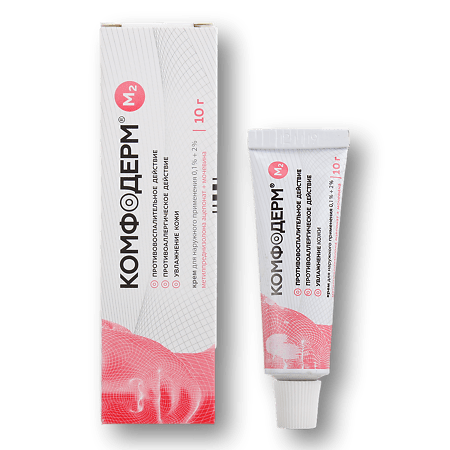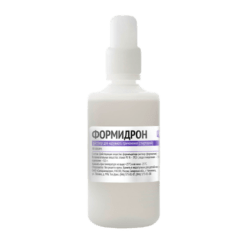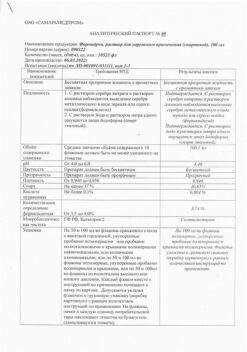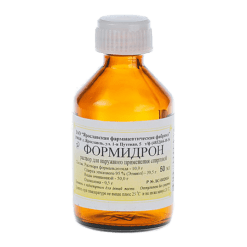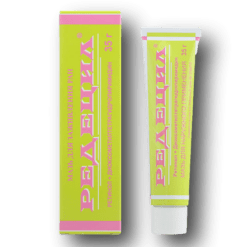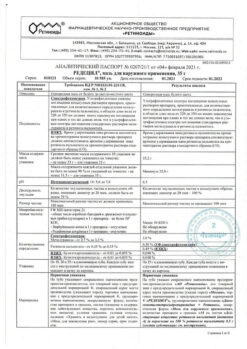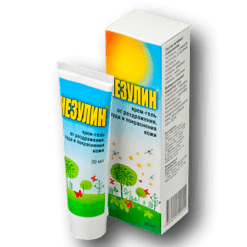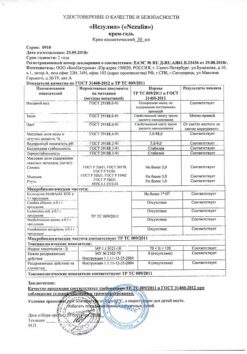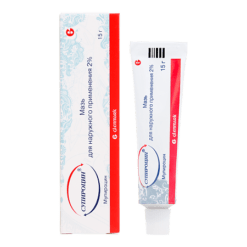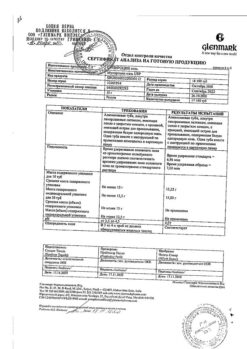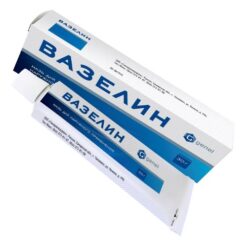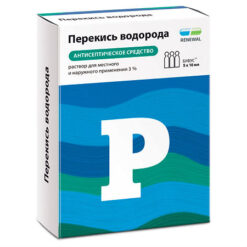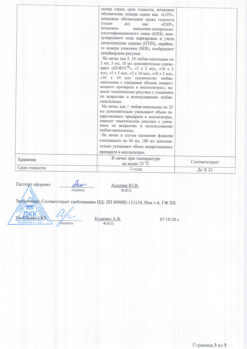No products in the cart.
Komfoderm M2, cream 10 g
€13.24 €11.58
Description
Comfoderm® M2 is a combination drug with an effect due to its constituents.
Methylprednisolone aceponate is a nonhalogenated synthetic steroid.
When applied externally methylprednisolone aceponate suppresses inflammatory and allergic skin reactions associated with increased proliferation, which leads to reduction of objective symptoms of inflammation (erythema, edema, mucous) and subjective sensations (itching, irritation, pain, etc.). When methylprednisolone aceponate is used topically at the recommended dose, systemic effects are minimal in both humans and animals.
After repeated application of methylprednisolone aceponate on large surfaces (40-60% of the skin surface), as well as when used under the occlusive dressing no adrenal disturbances are noted: plasma cortisol levels and its circadian rhythm remain within normal limits, there is no reduction of cortisol concentration in daily urine.
Methylprednisolone aceponate (especially its main metabolite, 6α-methylprednisolone-17-propionate) binds to intracellular glucocorticoid receptors. The steroid-receptor complex binds to specific DNA sites of immune response cells, thus causing a series of biological effects.
In particular, binding of the steroid-receptor complex to the DNA of the immune response cells leads to induction of macrocortin synthesis. Macrocortin inhibits the release of arachidonic acid and thus the formation of inflammatory mediators such as prostaglandins and leukotrienes.
Inhibition by glucocorticosteroids of vasodilatory prostaglandin synthesis and potentiation of vasoconstrictor effect of adrenaline lead to vasoconstrictor effect.
Urea has keratolytic and moisturizing effects. Urea promotes water binding and consequently softens the horny layer of the skin. In addition to its keratolytic effect, urea has proteolytic activity.
Pharmacokinetics
Methylprednisolone aceponate is hydrolyzed in the epidermis and dermis when applied topically. The main and most active metabolite is 6α-methylprednisolone-17-propionate, which has a significantly higher affinity for glucocorticosteroid receptors in the skin, indicating the presence of its “bioactivation” in the skin.
The extent of percutaneous absorption depends on the condition of the skin and the route of application (with or without an occlusive dressing).
The percutaneous absorption in patients with atopic dermatitis (neurodermatitis) and psoriasis is not more than 2.5%, which is only slightly higher than that in healthy volunteers (0.5-1.5%).
After entering the systemic bloodstream 6α-methylprednisolone-17-propionate rapidly conjugates with glucuronic acid and is thus inactivated.
Methylprednisolone aceponate metabolites are eliminated mainly by the kidneys with a half-life of about 16 hours. Methylprednisolone aceponate and its metabolites do not cumulate in the body.
Due to the low absorption capacity of urea when used topically, there is little chance of systemic effects.
Indications
Indications
Inflammatory skin diseases sensitive to therapy with topical glucocorticosteroids and accompanied by impaired keratinization:
— atopic dermatitis, neurodermatitis;
– true eczema;
– microbial eczema;
– simple contact dermatitis;
— allergic (contact) dermatitis;
– dyshidrotic eczema.
Pharmacological effect
Pharmacological effect
Comfoderm® M2 is a combination drug whose effect is determined by its constituent components.
Methylprednisolone aceponate is a non-halogenated synthetic steroid.
When applied externally, methylprednisolone aceponate suppresses inflammatory and allergic skin reactions associated with increased proliferation, which leads to a reduction in objective symptoms of inflammation (erythema, swelling, weeping) and subjective sensations (itching, irritation, pain, etc.). When methylprednisolone aceponate is used topically at the recommended dose, the systemic effect is minimal in both humans and animals.
After repeated application of methylprednisolone aceponate to large surfaces (40-60% of the skin surface), as well as when applied under an occlusive dressing, no dysfunction of the adrenal glands is observed: the level of cortisol in plasma and its circadian rhythm remain within normal limits, and there is no decrease in the concentration of cortisol in daily urine.
Methylprednisolone aceponate (especially its main metabolite, 6α-methylprednisolone-17-propionate) binds to intracellular glucocorticoid receptors. The steroid receptor complex binds to certain sections of the DNA of immune response cells, thus causing a series of biological effects.
In particular, the binding of the steroid receptor complex to DNA by immune response cells leads to the induction of macrocortin synthesis. Macrocortin inhibits the release of arachidonic acid and, thereby, the formation of inflammatory mediators such as prostaglandins and leukotrienes.
Inhibition of the synthesis of vasodilating prostaglandins by glucocorticosteroids and potentiation of the vasoconstrictor effect of adrenaline lead to a vasoconstrictor effect.
Urea – has keratolytic and moisturizing effects. Urea helps bind water and, as a result, soften the stratum corneum of the skin. In addition to the keratolytic effect, urea has proteolytic activity.
Pharmacokinetics
When applied topically, methylprednisolone aceponate is hydrolyzed in the epidermis and dermis. The main and most active metabolite is 6α-methylprednisolone-17-propionate, which has a significantly higher affinity for glucocorticosteroid receptors of the skin, which indicates the presence of its “bioactivation” in the skin.
The extent of percutaneous absorption depends on the condition of the skin and the method of application (with or without an occlusive dressing).
Percutaneous absorption in patients with atopic dermatitis (neurodermatitis) and psoriasis is no more than 2.5%, which is only slightly higher than that in healthy volunteers (0.5-1.5%).
After entering the systemic circulation, 6α-methylprednisolone-17-propionate is rapidly conjugated with glucuronic acid and thus inactivated.
Metabolites of methylprednisonolone aceponate are eliminated mainly by the kidneys with a half-life of about 16 hours. Methylprednisolone aceponate and its metabolites do not accumulate in the body.
Due to the low absorption of urea when applied topically, the likelihood of its systemic effects is low.
Special instructions
Special instructions
In the presence of bacterial complications and/or dermatomycosis, in addition to therapy with Comfoderm M2, it is necessary to carry out specific antibacterial and/or antifungal treatment.
The drug is not intended for use in ophthalmology. Avoid contact of the drug with the eyes and mucous membranes.
As with the use of systemic glucocorticoids, glaucoma may develop with topical use of GCS (for example, after use in high doses, due to very long-term use, use of occlusive dressings, or application to the skin around the eyes).
Atrophic changes may develop on the skin of the face more often than on other surfaces of the body after long-term treatment with GCS for external use.
Impact on the ability to drive vehicles and operate machinery
Not identified.
Active ingredient
Active ingredient
Methylprednisolone aceponate, Urea
Composition
Composition
100 g of cream contains:
Active substances:
methylprednisolone aceponate 100 mg;
urea 2 g;
Excipients:
liquid paraffin (vaseline oil) – 15 g,
propylene glycol – 5 g,
polysorbate 80 – 1 g,
carbomer interpolymer (type A) – 1 g,
trometamol – 400 mg,
methyl parahydroxybenzoate – 100 mg,
purified water – up to 100 g.
Pregnancy
Pregnancy
If it is necessary to use the drug Comfoderm® M2 during pregnancy and lactation, the potential risk to the fetus and the expected benefits of treatment for the mother should be carefully weighed. During these periods, long-term use of the drug on large areas of the skin is not recommended. Nursing mothers should not apply the drug to the mammary glands.
Contraindications
Contraindications
Hypersensitivity to the components of the drug;
tuberculous or syphilitic processes in the area of application of the drug;
viral diseases (for example, chicken pox, shingles);
rosacea, perioral dermatitis in the area of application of the drug;
areas of skin with manifestations of a reaction to vaccination;
children under 18 years of age.
Side Effects
Side Effects
Very rarely (in less than 0.01% of cases) local reactions may be observed, such as itching, burning, erythema, and the formation of a vesicular rash.
If the drug is used for more than 4 weeks and/or on an area of 10% or more of the body surface, the following reactions may occur: skin atrophy, telangiectasia, stretch marks, acneiform skin changes, systemic effects due to corticosteroid absorption.
In rare cases (0.01%-0.1%), folliculitis, hypertrichosis, perioral dermatitis, skin depigmentation, and allergic reactions to one of the components of the drug may occur.
Interaction
Interaction
No interaction of the drug with other drugs has been identified, however, it should be taken into account that the simultaneous use of the drug
Comfoderm M2 with other ointments or creams can lead to increased resorption of the medicinal substances included in their composition.
Overdose
Overdose
Symptoms: with excessively long and/or intensive local use of GCS, skin atrophy (thinning of the skin, telangiectasia, stretch marks) may develop.
Treatment: if signs of skin atrophy appear, the drug must be discontinued.
Storage conditions
Storage conditions
The drug should be stored out of the reach of children at a temperature not exceeding 25°C.
Shelf life
Shelf life
2 years.
Manufacturer
Manufacturer
Akrikhin JSC, Russia
Additional information
| Shelf life | 2 years. |
|---|---|
| Conditions of storage | The drug should be kept out of reach of children at a temperature not exceeding 25 ° C. |
| Manufacturer | Akrihin HFC JSC, Russia |
| Medication form | exterior cream |
| Brand | Akrihin HFC JSC |
Related products
Buy Komfoderm M2, cream 10 g with delivery to USA, UK, Europe and over 120 other countries.

